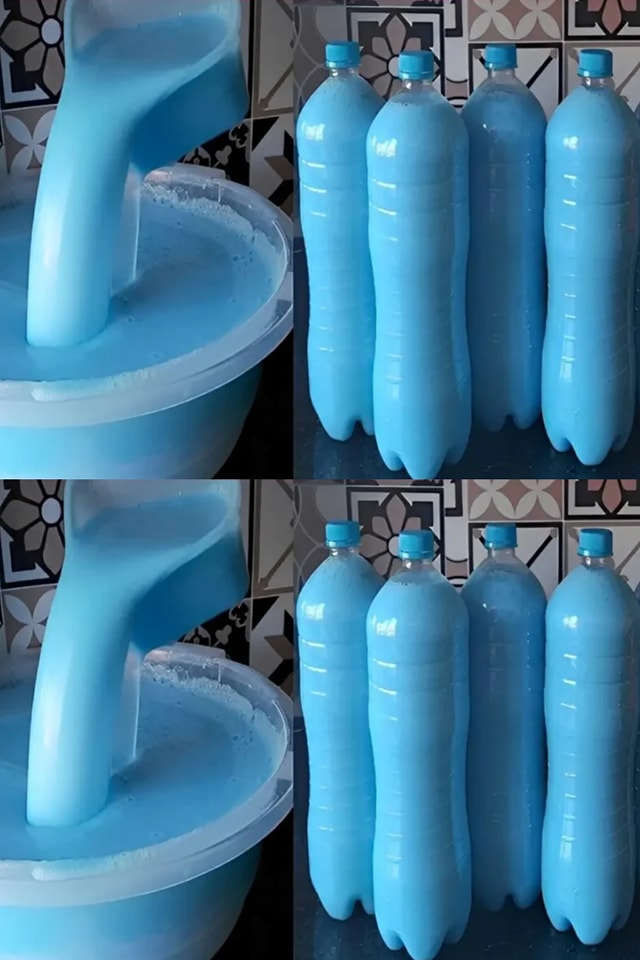ADVERTISEMENT
# Liquid Laundry Soap That Does It All: Clean and Soften with Only 3 Ingredients
Doing laundry can be a time-consuming and sometimes expensive task, especially when you’re relying on store-bought products that may not always deliver the results you’re looking for. From tackling tough stains to ensuring your clothes stay soft and fresh, it can feel like you need multiple products to get the job done. But what if there was a way to streamline the process? What if you could make a laundry soap that both **cleans** and **softens** your clothes, all while being affordable and environmentally friendly?
Enter the solution: a **liquid laundry soap** made with only **three simple ingredients**. Not only is it effective in cleaning your laundry, but it also acts as a fabric softener, saving you money and cabinet space. In this article, we will explore how you can make your own liquid laundry soap with just a few ingredients, the benefits of doing so, and why it’s a great alternative to commercial laundry products.
## Why Make Your Own Liquid Laundry Soap?
Before we dive into the recipe, it’s important to understand why homemade laundry soap is such an appealing option. Many commercial laundry detergents are packed with synthetic fragrances, dyes, and harsh chemicals, which can be irritating to sensitive skin and bad for the environment. By making your own laundry soap, you can control the ingredients and avoid these unnecessary chemicals. Let’s explore the key reasons to make your own laundry soap.
### 1. **Cost-Effective**
Store-bought laundry detergents and fabric softeners can be expensive, especially if you have a large household or do frequent loads of laundry. When you make your own liquid laundry soap, you can save a significant amount of money. A batch of homemade laundry detergent can last for months, and the ingredients needed are affordable and easily available.
### 2. **Environmentally Friendly**
Homemade laundry soap is a more sustainable option. Many commercial laundry detergents come in plastic bottles, which contribute to plastic waste. By making your own soap, you can reduce plastic waste by reusing old bottles or investing in a reusable container. Furthermore, homemade soap typically contains fewer harmful chemicals, making it a more eco-friendly alternative.
### 3. **Gentle on Skin**
If you or anyone in your family has sensitive skin or allergies, commercial laundry detergents and fabric softeners can sometimes cause irritation. Many store-bought laundry products are full of harsh chemicals, synthetic fragrances, and artificial colors, all of which can aggravate skin conditions like eczema, rashes, or allergies. Homemade liquid laundry soap, on the other hand, is naturally free from these irritants and is gentle on the skin.
### 4. **Customizable Scent**
If you love your laundry smelling fresh, you can easily customize the scent of your homemade soap. By adding essential oils like lavender, lemon, or eucalyptus, you can create a pleasant, natural fragrance for your clothes. Plus, the scent will be much milder than the overpowering artificial fragrances in many commercial detergents.
### 5. **Easy to Make**
One of the biggest draws of homemade laundry soap is how easy it is to make. With only three ingredients, you can whip up a large batch of laundry soap in no time. Whether you’re a seasoned DIYer or a beginner, this recipe is simple and straightforward.
## The Three Key Ingredients
Now that you know why homemade laundry soap is worth considering, let’s talk about the three simple ingredients that make this liquid soap both effective and affordable. These three ingredients are common household staples, and they are all-natural, non-toxic, and gentle on your clothes.
### 1. **Castile Soap**
**Castile soap** is a natural, vegetable-based soap that’s incredibly versatile and gentle on the skin. It’s made from plant oils, such as olive oil or coconut oil, and doesn’t contain any synthetic ingredients or chemicals. Castile soap is an excellent choice for laundry soap because it cleans effectively without the use of harsh chemicals.
For Complete Cooking STEPS Please Head On Over To Next Page Or Open button (>) and don’t forget to SHARE with your Facebook friends
